HUBLOT - MP-08 Antikythera SunMoon Tourbillon Limited Edition NEW
Click on the mouse wheel to see the large size ...
Hublot presents the ANTIKYTHERA SUNMOON watch
The fusion of Antiquity and Modernity.
One year on from the launch of the "Tribute to the Antikythera Mechanism" at the Archaeological Museum of Athens, Hublot presents the "Antikythera SunMoon" watch, featuring highly precise Sun and Moon indications.
One year on from the launch of the "Tribute to the Antikythera Mechanism" at the Archaeological Museum of Athens, Hublot presents the "Antikythera SunMoon" watch, featuring highly precise Sun and Moon indications.
The Antikythera mechanism is one of the most mysterious objects in the history of civilisation. Discovered in Greek waters in 1901, it is considered the first "astronomical calculator" in the history of humanity, and dates back to the 2nd century BC(sometime between 150 and 100 BC.).
On the 5th April 2012, all of the original remains of the ship, the treasure and the Antikythera Mechanism were brought together in a single exhibition at the prestigious National Archaeological Museum of Athens, and unveiled in the presence of the Greek Minister for Culture.
Click on the mouse wheel to see the large size ... BIG FOTO
It was a significant event for the international archaeological and scientific communities. Among the objects being exhibited was the "Tribute to the Antikythera Mechanism" watch, a complex horological movement developed by Hublot as a tribute to the first "astronomical calculator" in the history of humanity, and probably dating back to the 2nd century BC. It was the first time that a watchmaking manufacture had had its work exhibited in a museum.
Hublot only produced four movements, each an exact miniature replica of the original mechanism: The first is on display at the Musée des Arts et Métiers (Museum of Arts and Crafts) in Paris, the second at the National Museum of Athens and the third is held by Hublot in recognition of the craftsmanship and ingenuity of its own engineers and watchmakers. The fourth will be sold at a unique auction in 2014.
Today, as part of Baselworld 2013, Hublot presents the "Antikythera SunMoon" watch, a unique edition of 20 pieces featuring a simplified and miniaturised version of the original mechanism, in honour of this masterpiece of Antiquity.
Click on the mouse wheel to see the large size ... BIG FOTO
Unveiled today, the result is a movement containing 295 components and 7 complications (compared to 495 components and 14 functions for the Hublot calibre exhibited at the Museum of Athens). It features only Sun and Moon indications. All of the indications are found on the dial side.
The Antikythera SunMoon includes both a solar and a lunar calendar, as well as an indication showing the sidereal position of the Sun and the Moon. This means that, as well as being able to read the time (hours and minutes), the wearer of this watch can ascertain, for a given day and with extreme accuracy, the phase of the Moon, or more specifically its shape in the sky, the name of the constellation behind the Moon and the time required for the Moon to pass through a constellation. For the same day, the watch shows the constellation located behind the Sun and indicates the time required for the Sun to pass through a constellation. The piece is completed by a flying tourbillon (without ball bearing) which rotates once every minute to indicate the seconds, with the hours and minutes shown by traditional hands at the centre of the movement on the dial side. Frequency 21,600 Vib/h (3 Hz). 120-hour power reserve.
Description of the movement and its operation
1. Basic movement:
Manual-winding mechanical movement equipped with a flying tourbillon
(without ball bearing) rotating once every minute to indicate the seconds.
Hours and minutes shown by traditional hands at the centre of the movement on the dial side.
The power reserve is 120 hrs. (5 days)
The operating frequency 21,600 Vib/h (3 Hz)
The plate bridges are made from bevelled brass with a drawn edge, circular-grained recesses
and a black ruthenium surface treatment.
The wheels are circular-grained, bevelled and rhodium-plated.
The steel is satin-finished and bevelled with a drawn edge.
Number of components: 295
Number of jewels: 37
2.
The movement features two winding crowns: One at 3 o'clock and one at 9 o'clock. The crown at
3 o'clock is for winding and time setting. Its first position is used to wind the movement's
mainspring, while the second position allows the time to be set (hours and minutes) in both
directions.
The second crown, located at 9 o'clock, has only one position and is used to scroll through the
lunisolar calendar in both directions.
3. Movement indications:
Unlike the Antikythera Mechanism, there is no indication on the underside (back). All of the
indications are found on the dial side:
At the front, pivoting at the centre of the movement, is the Moon hand which shows two
indications:
a. The Moon phases are shown by this hand in a circular window, with the extended end of the
Moon hand indicating in the first concentric circle the sidereal position of the Moon as viewed
from the Earth (by the wearer).
The sidereal position is determined by the constellation located directly behind the Moon as
observed by the wearer. The constellations are not reduced to a simple zodiacal name, as is
often the case on watches indicating the astrological sign of the zodiac. In this case, the
indication is of a sidereal zodiac sign.
This is an important distinction, as in the first concentric circle the sectors indicating the sign
of the zodiac are not of equal size. The time required for the Moon and Sun to pass through
these constellations varies, since they have different shapes in the sky. For example, Virgo
is represented in the zodiac by a woman lying on her side, while Cancer takes the form of a
small, very square crab. To summarise, this indication shows the sector of the sky in which
the Moon can be found at a precise moment.
b. A hand, positioned concentrically in relation to the first indication on the Lunar calendar,
features a Sun symbol at its end, and shows two indications:
- In the second concentric circle on the outside of the dial, the end of the hand
shows the day of the month in the solar year, in other words, the date.
- The second indication shown by this hand is the sidereal position of the Sun as
viewed from the Earth (by the wearer)
4.
These two lunisolar indications are not independent. The wearer moves the calendar hands
using the crown located at 9 o'clock, choosing the day of the year to be indicated by the end of
the Sun hand. The movement automatically calculates the other lunar indications.
5.
What is the purpose of this watch?
As well as being able to read the time (hours and minutes), the wearer of this watch can
ascertain, for a given day of the solar year, the name of the constellation behind the Sun and the
time required for the Sun to pass through a constellation. For the same day, the wearer can find
out the phase of the Moon, or more specifically its shape in the sky, the name of the constellation
behind the Moon and the time required for the Moon to pass through a constellation.
6.
The mechanism gives extremely precise indications:
a. The Moon phase, or synodic month, in other words the period between two full moons, is
29.36 days.
b. The position of the Moon in the zodiac in relation to the Earth (sidereal month) is one
rotation every 27.322 days. In addition, the speed of the Moon in this mechanism alters
to compensate for the variation of 2 hours and 20 minutes that occurs each time it orbits
the Earth.
c. The Sun indicator hand completes one rotation every sidereal year, equivalent to
365.256363051 days.
Click on the mouse wheel to see the large size ...
---------------------------------------------------
Technical Specifications
- Movements
- HUB9008 Manual-winding Mechanical Movement Equipped with a Flying Tourbillon
- Cases
- Satin-finished, Polished and Microblasted Titanium
- Bezels
- Circular Satin-finished and Polished with 4 H-shaped Titanium Screws
- Dials
- Multilayered Circular Satin-finished Opalin colour and Black Dial - Satin-finished Opalin colour Hands with Black Luminescent and Satin-finished Gold Plated Sun and Moon Hands
- Straps
- Black Rubber and Gummy Alligator Strap - Satin-finished and Microblasted Black PVD Titanium Deployant Buckle Clasp
Ref : 908.NX.1010.GR
---------------
Press Release - PDF
-----------------------------------
www.facebook.com - Hublot
---------------------------------------------
www.Hublot.com


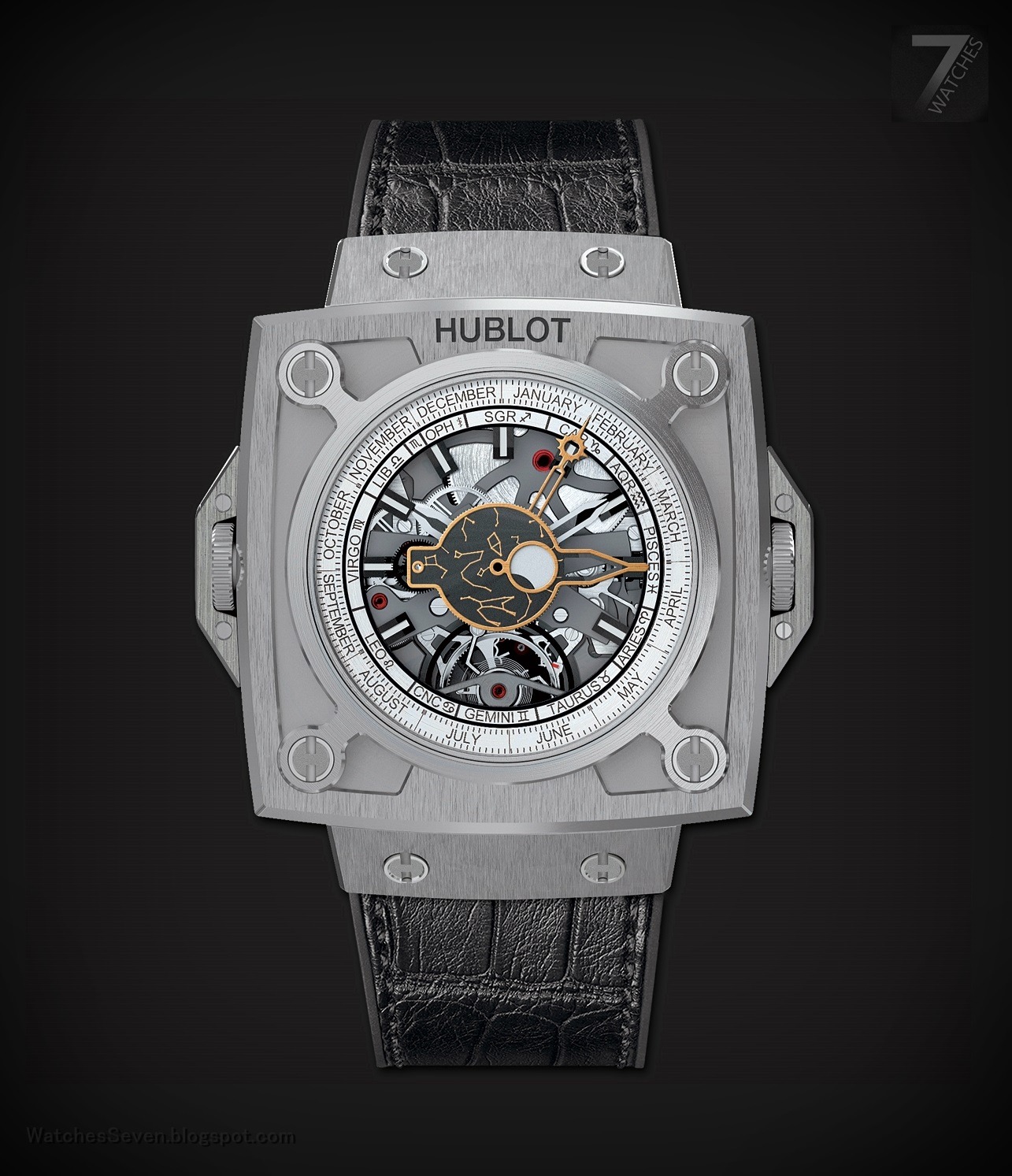
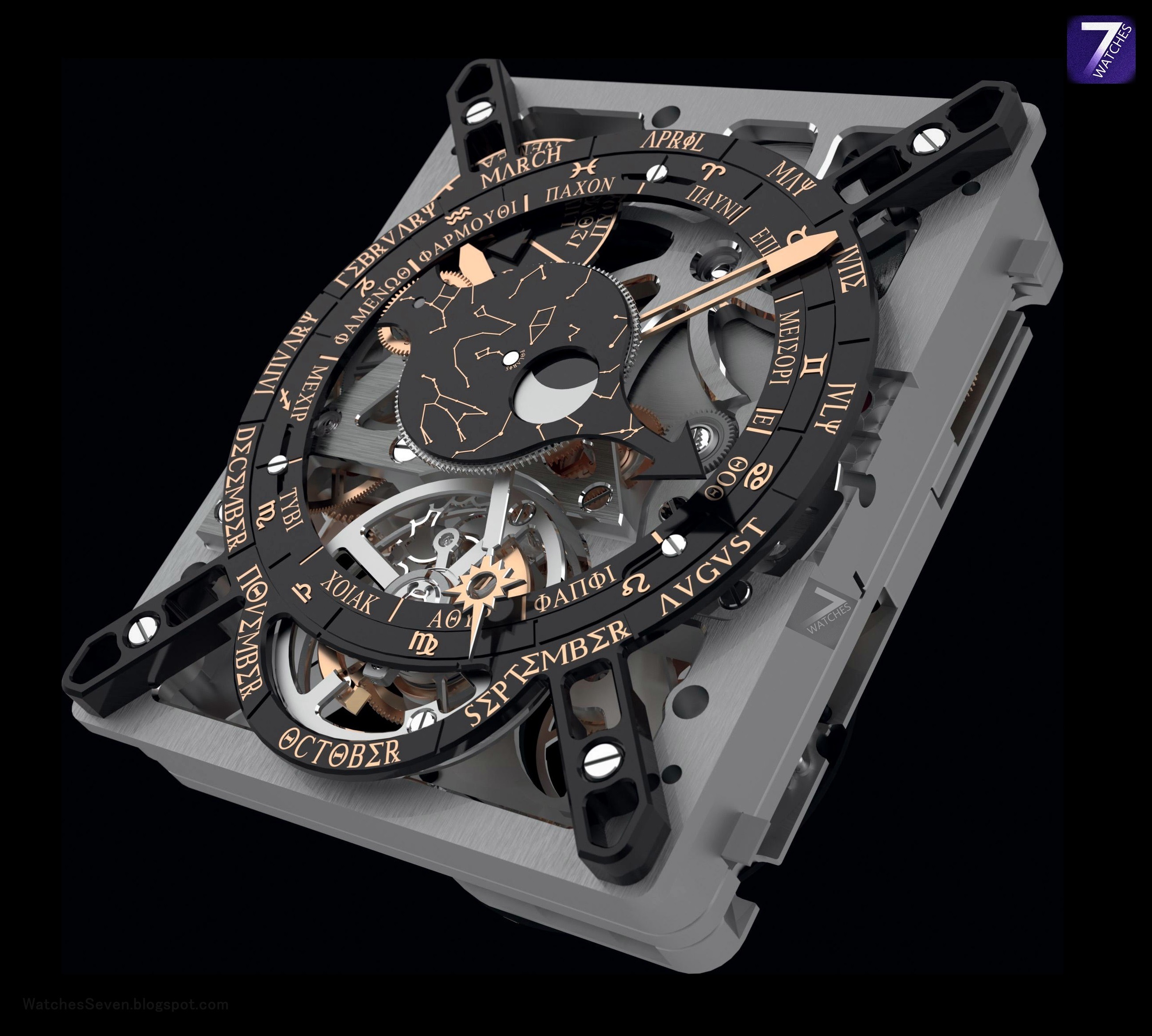
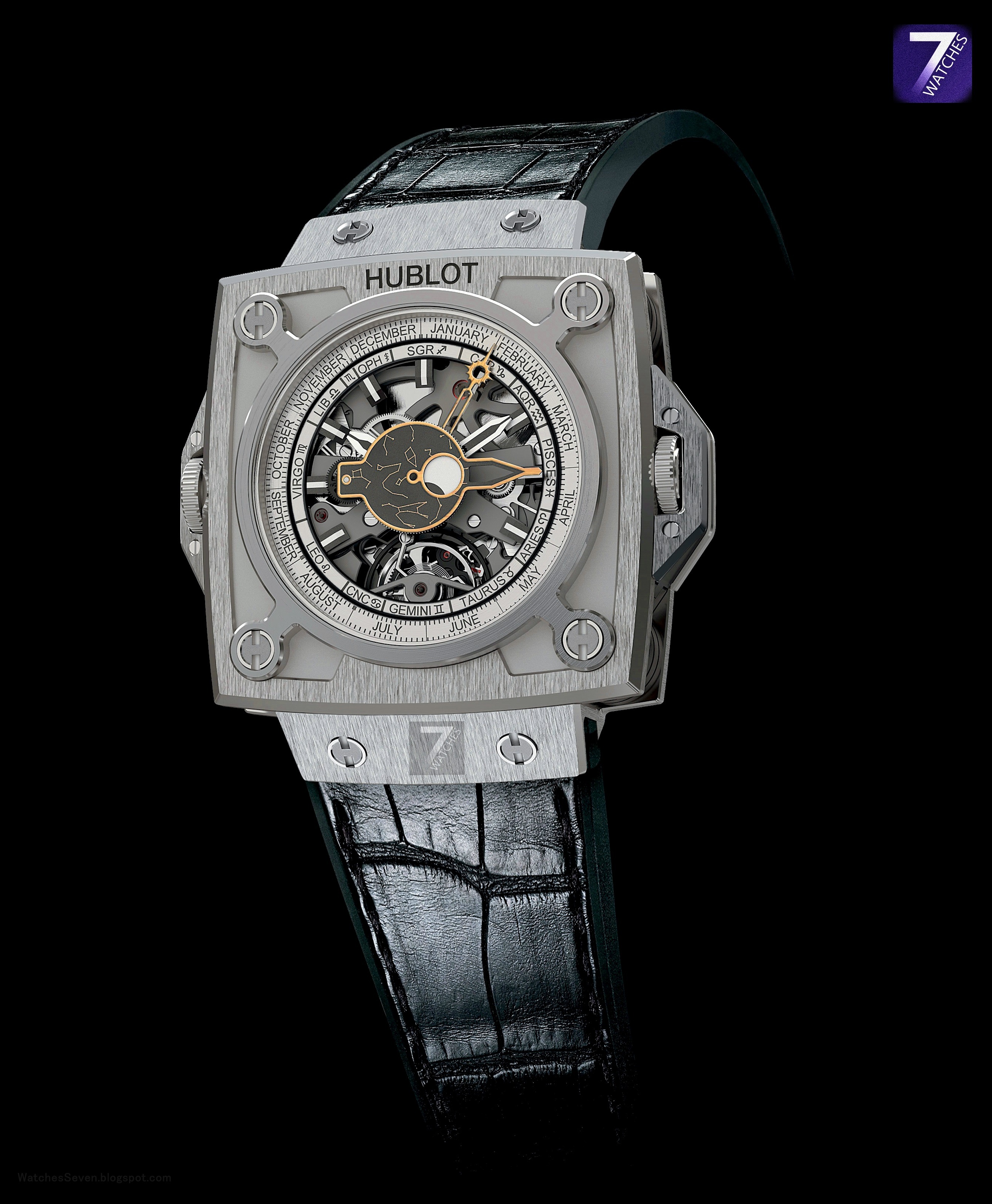
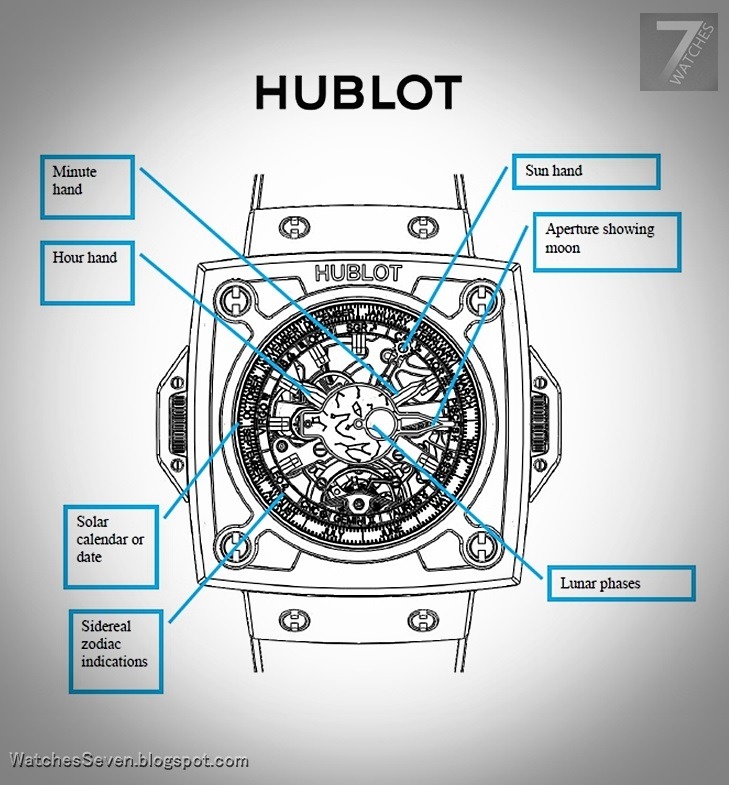
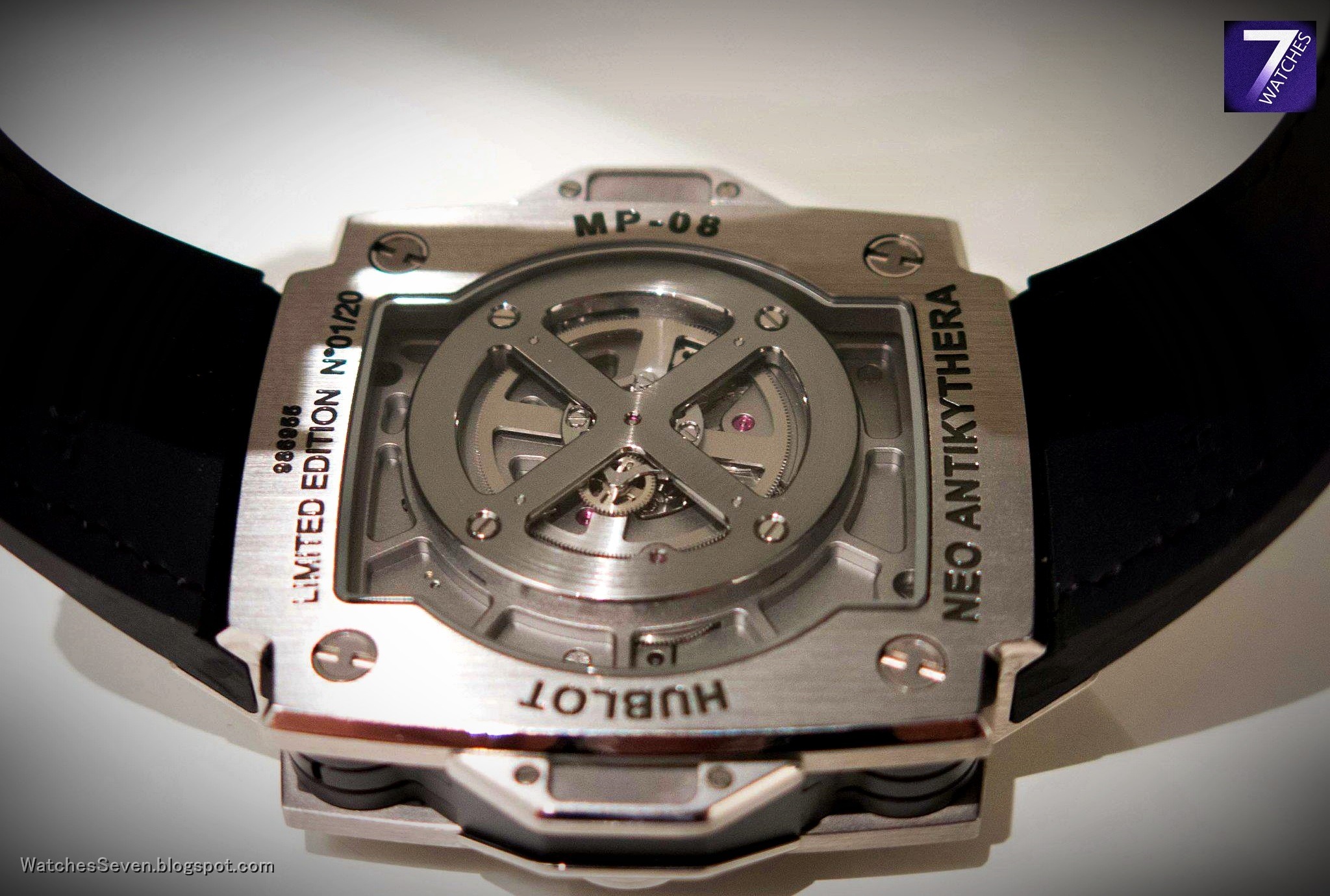
No comments:
Post a Comment